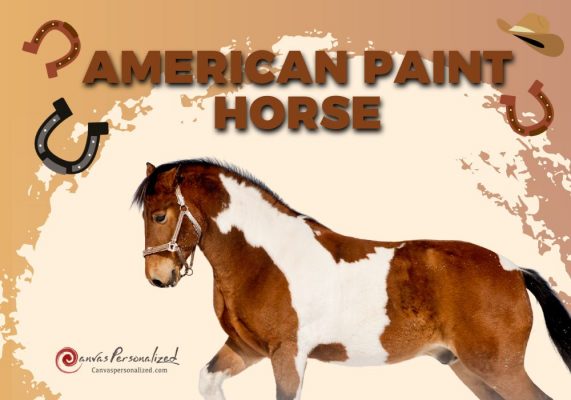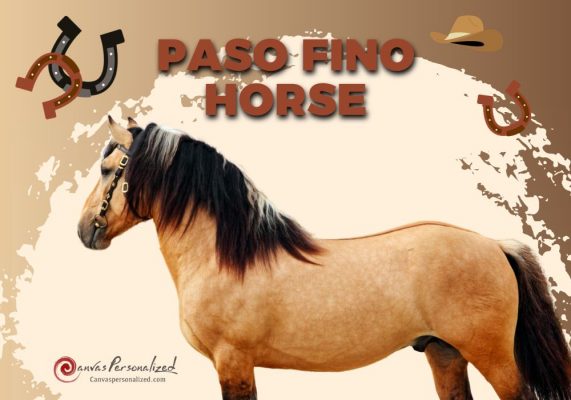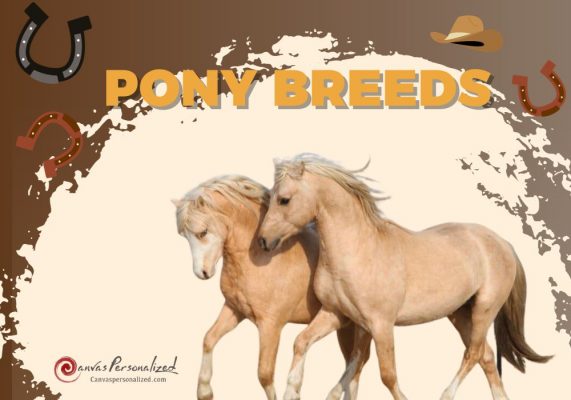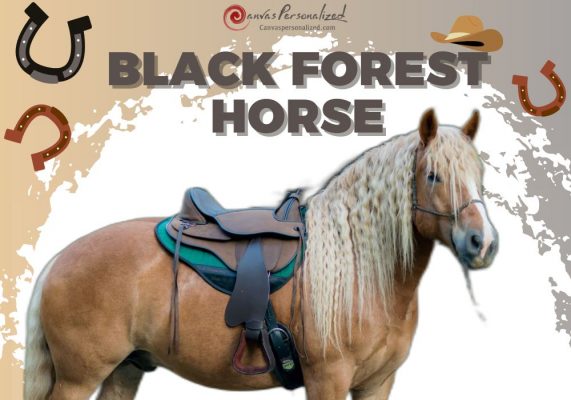The Appaloosa horse, which is known for its colorful spotted coats, is one of the most distinctive and versatile breeds in the world. These horses have a rich history that spans from ancient times to the present day, and they have been used for various purposes, such as hunting, racing, and riding. In this article, Canvas Personalized will explore all about Appaloosa horses, their origin, characteristics, and personalities.
Appaloosa horse pros and cons
| Pros | Cons |
|---|---|
| Easy to find | Prone to bore easily |
| Great for novices | Genetic defects |
| Hardy and resilient | The potential for misunderstanding when selling solid-colored Appaloosas for uses other than breeding |
| Multi-talented and adaptable | |
| Steady and agile | |
| Powerful | |
| Fast | |
| Enduring |
1. The Origin of The Appaloosa Horse
The Appaloosa horse breed has a rich history that dates back to the 17th century when Spanish explorers brought their ancestors to North America. These horses found their way to the Northwest, where Native Americans, especially the Nez Perce people, admired and bred them. They wanted to create horses that had vivid colors, gentle temperaments, and sharp minds.
The Appaloosa Horse got its name from the Palouse River area, where the Nez Perce lived. They were first called Palouse horses, but later the name “Appaloosa” emerged.

The breed faced a tragic fate in the late 1870s when the U.S. government tried to seize Native American lands. Some tribe members managed to escape with their horses, but many Appaloosas were lost, stolen, or killed.
In the 1930s, with the help of the Appaloosa Horse Club (ApHC) and a small group of dedicated individuals, the Appaloosa was revitalized. Formed in 1938, the club’s primary function was to register and safeguard the breed. To this day, it remains one of the largest and most prestigious equine breed registries in the world.
2. Appaloosa Characteristics of Appearance
Size
While some may be slightly taller, the average height of an Appaloosa horse is between 14.2 hands (56.8 inches) and 16 hands (64 inches). The typical weight is between 950 and 1,200 pounds.

Appaloosa Horse Color and Markings
The Appaloosa horse breed has a wide range of colors, from roans of various shades to grays, palominos, chestnuts, cremellos/perlinos, grullas, duns, buckskins, blacks, browns, and bays. The face of the Appaloosa can have different markings, such as bald, blaze, snip, stripe, and star. The lower legs can also have different markings, such as eel, pastern, ankle, half-pastern, coronet, stocking, half-stocking, and lightning.

The Appaloosa’s skin has patches of white and dark pigmentation. These patches can form different patterns on the horse’s body, depending on the horse’s genes. The registry recognizes the following coat patterns:
- Blanket: The horse has a white or white-spotted cover over its haunches.
- Leopard: The horse has a white body with dark spots all over it.
- Snowflake: The horse has a dark body with white specks or spots, mostly on its haunches.
- Marble/Varnish: The horse has a mix of white and dark hairs that create a marbled or varnished look.
Solid-colored Horses of the Appaloosa breed may be “appendix registered” if they contain the gene for a specific coat pattern but don’t really display that pattern. Most Appaloosas have relatively little hair on their manes and tails. The muzzle and other places with sparse hair are speckled. In addition, the hooves frequently feature white and dark stripes.

Conformation
The ApHC’s current breed standards call for a slender, straight head with an eye that stands out and pointed ears in the ideal Appaloosa. Horses should have well-muscled bodies with deep chests, sloping shoulders, well-rounded quarters, and a short, straight back.
Straight and powerful-looking, the Appaloosa’s legs should sport rounded hooves and a well-supported fetlock. All Appaloosas, regardless of their pedigree or coat color, should be bred with health and longevity in mind.

Unique Features of the Appaloosa Horse
Each Appaloosa is unique because of the countless possible combinations of coat color and pattern. However, its tenacity and agility, together with its extreme loyalty and sweetness, are all highly prized qualities.
Furthermore, the Appaloosa is unique among horses due to its distinctive hoof striping. It’s oriented vertically and features a distinguishing dark-and-light alternating pattern on each hoof. The white sclera surrounding the iris of an Appaloosa’s eye is also obvious. The majority of horse breeds don’t have this trait.

3. Appaloosa Temperament
The Nez Perce people wanted the Appaloosa horse to be calm and docile. They kept the early Appaloosas close to their camps and let them carry their babies on cradleboards.
The modern Appaloosa is still a kind and gentle friend to the family. This horse is usually a reliable ride for children. The Appaloosa is also easy to train and willing to work, which makes it a favorite choice for parade makers, ranchers, trail riders, and other horse lovers.

4. How to Care
Diet and Nutrition
Appaloosas have the same diet as other horses, which consists of fresh grass, quality hay, grains, and some occasional fruit or vegetable snacks. If they are kept in stalls and do not have access to pasture, they may need vitamin and mineral supplements. Their food intake depends mainly on their weight and workload.

Common Health Issues
Most Appaloosas are in good health, and they rarely exhibit any significant behavioral problems or lameness. However, many people are at risk of developing a variety of eye disorders. Their eyes often get watery, which makes them a magnet for flies. This can cause irritation or infection, so a fly mask is a good idea.
They also tend to suffer from equine recurrent uveitis at a higher rate than most other breeds. Puffy eyes, redness, and squinting are all symptoms of uveitis, an infection of the drainage canals of the eye. It can cause permanent damage to the retina and eventual blindness. There is no cure for this condition, but treatment can reduce the pain and inflammation.
Some Appaloosas also have a gene that causes congenital fixed-night blindness, which means they are born without the ability to see in the dark. Horses with this condition have always struggled to see at night. A veterinary ophthalmologist can evaluate the horse’s eyes to see if it has the ailment.

Grooming
Stabled horses should be groomed once a day at a minimum to prevent the buildup of dirt, debris, and tangles. Horses kept in pastures typically need less regular grooming. More frequent brushings can help a white horse’s coat appear at its finest. Using horse shampoo on a regular basis is also recommended. In addition, you should check for injuries and disinfect the hooves every day.
Furthermore, some Appaloosas are prone to sun damage, especially on exposed pink skin and regions of light hair. You should protect your horse from the sun by using a sunscreen made specifically for horses, a UV-resistant fly cover, and making sure your horse always has access to shade.
5. What are Appaloosa Horses Used for?
Whether for fun or for competition, Appaloosa horses can do it all. Their versatility and intelligence make them shine in different activities, from exploring trails to herding cattle, from performing in rodeos to racing on tracks, from jumping over fences to trotting with grace.
Appaloosas also have a flair for the screen, where their eye-catching coats and expressive eyes draw the viewers’ interest. They are kind and sociable horses that bond well with their owners and riders of all skill levels.

6. How to Adopt or Buy an Appaloosa?
The price of an Appaloosa can vary from $1,000 to $10,000, depending on its age, training, and lineage. You have a good chance of finding a suitable Appaloosa horse for sale near you, as they are becoming more popular.
Before you decide to buy or adopt one, make sure you visit the rescue or breeder and get to know the horse. Ask for as much information as possible about its history, health, personality, and skills. Look out for any signs of pain or illness that they might have missed or hidden. And don’t forget to have your vet examine the horse thoroughly to ensure it’s in good shape.

For your convenience, we have produced the following list of some of the most reputable Appaloosa horse breeders in the USA:
| Breeder | Location | Website | Specialty |
|---|---|---|---|
| Double M Bar Ranch | Wolfe City, TX | https://www.doublembarranch.com/ | Producing uniquely colored, well-marked, Appaloosas without compromising quality or disposition |
| Sheldak Ranch | Starkweather, ND | https://sheldakranch.com/ | Raising champions with foundation bloodlines and versatile performance |
| EquineNow | Various | https://www.equinenow.com/appaloosaunitedstates.htm | Listing Appaloosas for sale from different states and sources |
>>> Read more:
- Unveiling Spotted Saddle Horse Breed: Versatile and Striking
- Gypsy Vanner Horse: Overview About This Awesome Breed
In conclusion, the Appaloosa horse is one of the most fascinating and varied horse breeds in existence. Its coats of many different colors and patterns are a beautiful reflection of the variety of genes it has. As we wrap up our exploration, remember to stay tuned to Canvas Personalized for more informative articles on wonderful breeds and the best ways to care for your pet.










